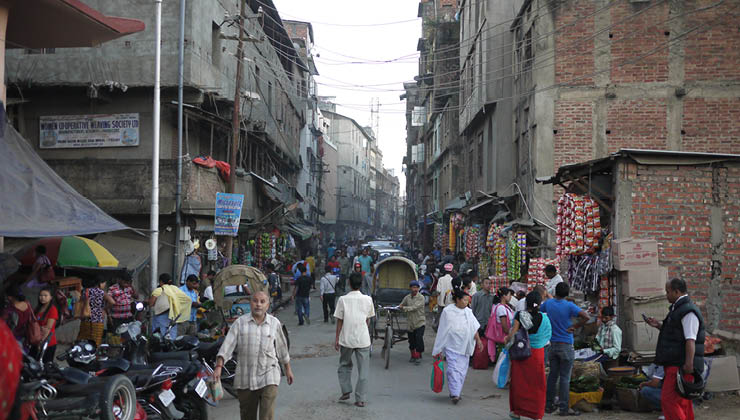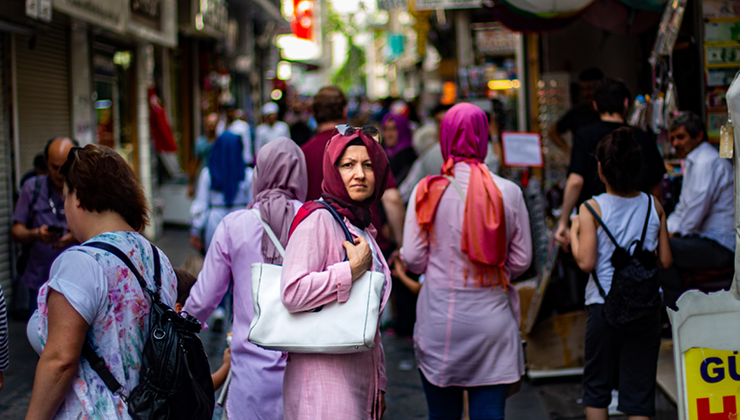Christine Chinkin and Gema Fernández Rodríguez de Liévana analyse the latest report from the UN trafficking expert, and find reason and opportunity for a more joined up approach to tackling trafficking of women and girls.

Last year the Centre for Women, Peace and Security published a Working Paper that reflected upon the interplay between the different international legal regimes that have evolved for combatting gender-based violence against women, in peacetime and in conflict, and human trafficking. The report presented to the UN General Assembly on 26 October 2018 by the Special Rapporteur on trafficking in persons, especially women and girls, Maria Grazia Giammarinaro (SR), built upon some of the arguments in urging states to adopt a human rights approach to trafficking and for its integration with the Women Peace and Security (WPS) agenda. The SR emphasises the gendered dimensions of trafficking in persons and its disproportionate impact upon women and girls in conflict and post-conflict. She notes that while the number of male victims of trafficking has significantly increased over the past decade, women and girls make up 51% and 20% of trafficking victims respectively. Women and girls are disproportionately subject to trafficking for sexual exploitation, which, when committed in conflict, can constitute conflict-related sexual violence. Nevertheless, recognition of trafficking as a gendered phenomenon has only been slowly acknowledged.
Since the adoption of Resolution 1325 (2000) the UN Security Council has considered sexual violence against women and girls in conflict as a threat to international peace and security. In its subsequent WPS resolution 1820 (2008) the Council affirmed that effective measures to prevent and respond to sexual violence as a tactic of war can ‘significantly contribute to the maintenance of international peace and security’ and demanded that ‘all parties’ to armed conflict protect civilians against such violence. The Council has also addressed human trafficking, (Resolution 2331 (2016); Resolution 2388 (2017), and has identified the relationship between trafficking, sexual violence in armed conflict and terrorism, all of which threaten international peace and security. But it has failed to integrate this understanding with its own WPS agenda. This disconnect undermines a holistic approach towards combatting trafficking in persons, conflict-affected sexual violence and gender-based violence against women, crimes that in the lived experiences of women are often interlinked and not easily separated. It also casts doubt on the Council’s awareness of debates around the continuum of sexual violence across war and peace, as well as its multiple conflict-related manifestations outside those of certain terrorist groups, which are the primary focus of the resolutions on trafficking.
In contrast the SR recommends the integration of trafficking into the WPS agenda to complement ongoing anti-trafficking efforts at the global level, including those of the Security Council. This tactic reinforces the importance of human rights in tackling human trafficking: WPS is in essence a human rights, not a security, agenda, the SR is a human rights mandate and trafficking of women and girls constitutes a violation of their human rights and gender-based violence against women. Under human rights law states must exercise due diligence to prevent, investigate, prosecute and punish violence against women and accord appropriate reparations to its victims. Most states however perceive human trafficking through a criminal law, immigration and/or security lens that gives little attention to their human rights obligations.
Integrating human trafficking into WPS allows for a breakdown of appropriate responses under the four pillars of prevention, protection, participation and relief and recovery. The SR provides examples under each of these heads as well as practical recommendations. For instance under the prevention pillar she elucidates that conflict is systematically and systemically linked with the risk of being trafficked; this risk should be routinely taken into account from the very onset of conflict and immediate preventive measures introduced. Another constant consequence of conflict is the vulnerability of displaced and fleeing persons to trafficking. She suggests that IDP and refugee camps establish a registry of all persons residing in the camp as a protective measure against disappearance in conjunction with facilities for immediate and secure reporting of missing persons to allow for prompt investigation. Delay reduces the probability of a successful outcome to any such investigation. (Cottonfield; Guatemala). Most fundamentally, given the intersection between trafficking and other forms of violence against women, preventative anti-trafficking measures are to be considered ‘both as life-saving interventions and as being aimed at preventing violence against women.’
The need for consultation with women is captured by the WPS pillars for protection and prevention, as well as for participation. The SR emphasises its importance in the context of trafficked women observing that a widespread failure to recognise the connection between conflict and trafficking as a form of conflict-affected sexual violence means that it is often overlooked during conflict and is omitted from peace processes and planning for post-conflict reconstruction. But survivors of trafficking can make significant contributions to designing and implementing anti-trafficking programmes that are essential to breaking the cycle of violence that impedes a sustainable gendered peace. Women can provide insights into the local economy and assist in programme for reduction of the economic dependency that underpins further vulnerability to trafficking. Victims of trafficking can work with others to raise awareness of the predatory post-conflict economy that fuels demand for trafficking and to establish community-based protective networks. Effective programmes for relief and recovery with informed input from trafficked persons and a gendered approach toward access to and delivery of economic and social rights are described as ‘essential’ to long term recovery. Failure to develop and implement such policies lessens the likelihood of achieving stability and human security post-conflict (including food, health, gender and physical security) that are crucial elements in the prevention of extremism and trafficking.
The same is true of land reform. Access to land and livelihoods are frequently understood as post-conflict economic reconstruction rather than as aspects of combatting conflict-related sexual violence and its continuation in post-conflict. The SR describes the connection between conflict-related sexual violence and the forcible seizing of land, mines and natural resources that leads to forced displacement and enhances vulnerability to being trafficked. Victims are subjected to sexual exploitation and forced labour in illegal mines, and become economic commodities in the male dominated extractive industries that are operated by non-state actors outside the protection of the state. In seeking further research into the linkages between conflict-related sexual violence, trafficking, dispossession of land, exploitation of natural resources and of women, the SR expresses concerns in common with the Special Representative of the Secretary-General (SRSG) on conflict-related sexual violence. The latter also explains how sexual violence is used strategically to grasp control of land and resources, destroying the physical and economic security of displaced women and making socioeconomic reintegration vital to relief and recovery. The SRSG urges the Security Council to address the nexus between trafficking in persons and conflict-related sexual violence. Her mandate stems from Resolution 1888 (2009) thus strengthening the argument for integration of these currently separated agendas. The CEDAW Committee too has explained that trafficking is exacerbated during and after conflict and that conflict-affected areas constitute places of origin, transit and destination for trafficking (CEDAW Committee, General Recommendation No. 30). Taken together these expert opinions facilitate ‘joined up thinking … grounded in international law and a rights-based and victim-centred approach that is focused on the prevention of gender-based violence and the protection of women and girls from such violence in situations of armed conflict, displacement and post-conflict settings.’
This blog was written with the support of a European Research Council (ERC) grant under the European Union’s Horizon 2020 research and innovation programme (Grant agreement No. 786494).
The views, thoughts and opinions expressed in this blog post are those of the author(s) only, and do not reflect LSE’s or those of the LSE Centre for Women, Peace and Security.





